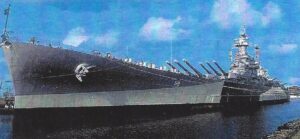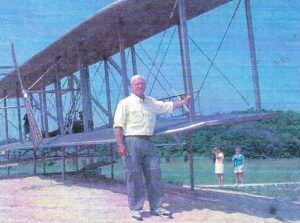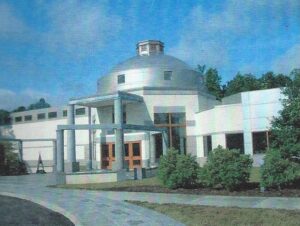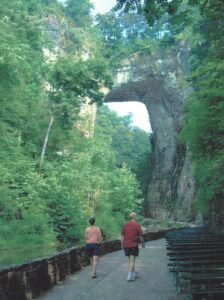The glider course I had signed up for at the Lookout Mountain Hang Glider School included several days of training on a hill where we would practice launches by running off the top of the hill to get airborne, controlling the glider’s direction in the descent, and then learning how to swing our feet forward in preparation for the stand-up landing. The course also included a flight in which I would be towed aloft to 2,000 feet by a powered aircraft.

My flight instructor was Rex, a 30-year-old cool dude. His favorite expression was “Hey, let’s do some flyin’, man.” Rex told me his father rode his motorcycle down from Indiana every summer to do a little hang gliding. So does that give you a clue why Rex and I got along so well.
You attach yourself to the glider with hanging straps below the wing and control it’s flight with a bar you grip in front of you. The glider weighs 50 pounds which isn’t much except that getting into position to run down the hill required a squat lift boosting the glider to your shoulders for the running start. After three days of squat lifts my thighs felt like hamburger. Students were expected to carry the gliders back up the hill after each flight, but my new best friend Rex did that for me.
My flights were going fairly well except I never seem to be able to time the landing correctly and generally dragged in on my belly and knees. Because of the heat, I was wearing shorts and my knees soon became bloodied landing gear. I told Rex, “You know it might be a good idea if the school provided kneepads.”
“Oh, we have those,” he said. “Do you want to use ‘em?”
Duh!
The towed flight to altitude was interesting. You control the gliders direction by swinging your weight in the straps beneath the wing. Pulling yourself forward causes the glider to dive and pick up speed. You slow down by pushing rearward. A swing to the right causes the wing to lower on that side and turn right. A swing left initiates a left turn. So, what’s so hard about that?
The tow is provided by an ultra-light aircraft using a 50-foot tow line. When power was applied, I was yanked into the air in less than ten feet. We had been warned that the ultra-light would tow us much faster than normal glide speed. On release, the glider tends to pitch up steeply, stall, then drop weightless until recovering its lift. It feels like that first drop on a roller coaster.
After release the smooth, silent glide was delightful. The view from 2,000 feet is mesmerizing. But you mustn’t get fixated because this is a sled ride constantly descending. One must set up the pattern for the landing. Needing a left turn, I gently swung my body left in the straps and turned … right. What? Trying again my glider was turning opposite from my swing in the straps. Uh-oh. This was not good. How could I ever make a controlled landing?
Then I figured it out. The only part of me swinging in one direction was my head and shoulders. My butt, the heaver end, was going to the opposite side. Whew. My next practice turns worked perfectly and I was able to make a successful landing.
My week at the Lookout Mountain Hang Gliding School was fun and I gained new skills. I never did step off that ramp by the headquarters building but now I’m confident that I could survive … at least with no more than minor injuries.
Tom Catalano, a high school friend and fellow football player lives in North Carolina. Tom was right guard, I was left guard. The tackle beside me was Jim Hellauer. The tackle beside Tom was Bob Malstrom. Jim and I were referred to simply as Jim and Jim. Catalano and Malstrom were known as Cat and Mouse.
Tom had been a career Army officer and had spent time at Fort Bragg in Fayetteville, North Carolina. The Army’s Airborne and Special Operations headquarters is based at Fort Bragg and they have a museum.
Tom had a motorcycle and over the phone we arranged to meet at Fort Bragg the following morning, to tour the museum with Tom as my guide, and then travel to his home where I would spend the night.
The museum was fascinating. Fort Bragg was where the 82nd Airborne trained prior to parachuting over Normandy in World War II. It is also home base for the Special Forces and Green Berets.
Tom’s home was only 45 minutes from Fayetteville where Tom’s wife Doris fixed us a delicious meal, did my laundry, and I had a delightful evening reminiscing with my old friend.
Departing the Catalano’s at 7:30 the next morning after a wonderfully restful night, I had a short ride to the Atlantic coast at Wilmington. There I did a quick tour of the Battleship North Carolina, decommissioned after WW II. The ship had a proud history having participated in the Battle of the Philippine Sea, Guadalcanal, Okinawa, and Iwo Jima.

Continuing northeast, 35 miles past Beaufort I took a two and a half hour ferry ride to the Outer Banks. I needed to take a second ferry after the first and the wait for each had consumed much of the day. However, on the second day I rode to Kitty Hawk to do the Wright Brothers National Museum.
I found it interesting that Orville and Wilber developed the design of their Wright Flyer by experimentation with a glider. Many of their aerodynamic discoveries were found by applying the techniques I had used at the hang gliding school. Their big breakthrough was warped wings which acted like ailerons.
Including that design in the powered Wright Flyer on December 17, 1903, their first flight of the day became the first successful controlled flight by a powered aircraft for a distance of 120 feet. The fourth flight of the day carried the Flyer 852 feet.

The Wrights were amazing pilots, learning their skills by trial and error. On the Centennial of the first flight in 2003, an exact replica of the Wright Flyer was built and experienced test pilots were asked to fly the aircraft. The best they could do was a flight of 90 feet, 30 feet short of Orville’s very first attempt.
Departing the Outer Banks the next day I was headed for Virginia, an appropriate final visit to the Civil War battlefield at Petersburg. It was appropriate because my first Civil War visit was Shiloh, the earliest battle of the war and Petersburg was the final battle leading to Lee’s surrender five days later at Appomattox. A museum had been built in Petersburg, called Pamplin Historical Park. The park was built by Robert Pamplin at a cost of $30 million and is considered America’s premier Civil War history attraction. I second that nomination. It’s incredible.

The park covers several acres and includes a number of fascinating exhibits in addition to the museum. There is a plantation, a military encampment, and a battlefield with earthworks and fortifications.
The National Museum of the Civil War Soldier is dedicated to the common soldier of the war, both North and South. It is the most unique museum I have ever visited. When you enter, you are asked to choose a guide from pictures of thirteen soldiers. My guide was Lt Woodcock of the Pennsylvania Volunteers. You are then given an audio player that automatically turns on as you enter the different rooms with your chosen guide doing the narration and explaining the scene you see before you.
The rooms represent camp life, soldiers on the march, death on the battlefield, trial by fire, and a field hospital. The hospital display was very graphic with a manikin representing a surgeon amputating a soldier’s leg. Outside the surgeon’s tent you can see a pile of arms and legs.
My final tourist stop on the trip was a brief visit to the Virginia Natural Bridge. Over 100 million years old, it is 215 feet tall and was carved by nature over the centuries. George Washington visited this site and climbed twenty feet up one of the walls and carved his initials in the stone. The initials are still there.

I was in Charleston, West Virginia on my last day of the trip, 350 miles from Bloomington. I could have taken the interstate and been home in six or seven hours. The other choice was the scenic route along the Ohio River. Even after fourteen days of 90-degree temperatures, with saddle sores and sunburned face and arms, I took the long way home. Just couldn’t get enough of my Rosie.
Thirteen years later as an 80-year-old, in September 2018 I took my last lengthy ride on Rosie to explore the National Parks of New Mexico. Laura Lane, a journalist with Bloomington’s Herald Times newspaper and reader of my blog, wrote a half-page article about that trip titled “Man’s Recent Cross-Country Motorcycle Venture Likely His Last.”
It was this trip that moved me to borrow Frank Sinatra’s song “One for My Baby” and make it the last paragraph of Rosie’s poem:
It’s quarter to three. There’s no one in the place except you and me.
So set ‘em up Joe. Here’s a little story that you ought to know.
We’re drinking my friend, to the end of a long episode.
So, it’s one for my Rosie, and one more for that long, long road.
Great Memories.

Another great story. Thanks Jim.
Jim, another interesting blog. You certainly have done some amazing things on your old gal Rosie. I didn’t realize that you we’re giving up all of the excitement for a sedentary life in Bloomington.